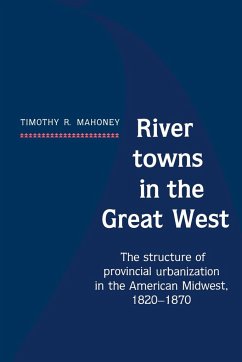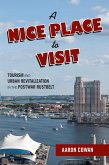This book analyzes the development of a distinctive, region along the upper Mississippi River north of St. Louis during the middle third of the nineteenth century.
This book analyzes, with unprecedented breadth and coverage, the development, maturation, growth, and sudden decline of a distinctive, regional urban economic system that developed along the upper Mississippi River north of St. Louis during the middle third of the nineteenth century. Between 1820 and the Civil War the upper Mississippi River valley was at the center of national and international attention. At the edge of the northern frontier, this area, known as 'The Great West,' was the destination of hundreds of thousands of immigrants from the East and from northern Europe. To many, its rich lands, temperate climate, and vast rivers offered an opportunity to establish a better life, as well as a chance to enter, if desired, the mainstream of American life. Drawing from a variety of methods used in historical geography, economic history, systems analysis, and social and urban history, Timothy Mahoney analyzes how early settlement patterns were affected by experience, climate, and geography and how they, in turn, shaped the initial patterns of economic, urban, and transportation development.
Table of content:
List of figures and tables; Acknowledgments; Part I. Human Geography and the Structure of Regional Life: 1. Introduction and 'topographical description'; 2. The land takes shape: the process of settlement; 3. Encountering the rivers; Part II. The Human System: 4. Towns, roads, steamboat routes, and the development of a regional system; 5. The system takes shape: an economic geography; 6. The structure of the regional economy; Part III. The Regional Urban System: 7. The currents of trade and regional urbanization; 8. Town and system: local history in a regional context; Epilogue; Appendixes; Index.
Hinweis: Dieser Artikel kann nur an eine deutsche Lieferadresse ausgeliefert werden.
This book analyzes, with unprecedented breadth and coverage, the development, maturation, growth, and sudden decline of a distinctive, regional urban economic system that developed along the upper Mississippi River north of St. Louis during the middle third of the nineteenth century. Between 1820 and the Civil War the upper Mississippi River valley was at the center of national and international attention. At the edge of the northern frontier, this area, known as 'The Great West,' was the destination of hundreds of thousands of immigrants from the East and from northern Europe. To many, its rich lands, temperate climate, and vast rivers offered an opportunity to establish a better life, as well as a chance to enter, if desired, the mainstream of American life. Drawing from a variety of methods used in historical geography, economic history, systems analysis, and social and urban history, Timothy Mahoney analyzes how early settlement patterns were affected by experience, climate, and geography and how they, in turn, shaped the initial patterns of economic, urban, and transportation development.
Table of content:
List of figures and tables; Acknowledgments; Part I. Human Geography and the Structure of Regional Life: 1. Introduction and 'topographical description'; 2. The land takes shape: the process of settlement; 3. Encountering the rivers; Part II. The Human System: 4. Towns, roads, steamboat routes, and the development of a regional system; 5. The system takes shape: an economic geography; 6. The structure of the regional economy; Part III. The Regional Urban System: 7. The currents of trade and regional urbanization; 8. Town and system: local history in a regional context; Epilogue; Appendixes; Index.
Hinweis: Dieser Artikel kann nur an eine deutsche Lieferadresse ausgeliefert werden.








